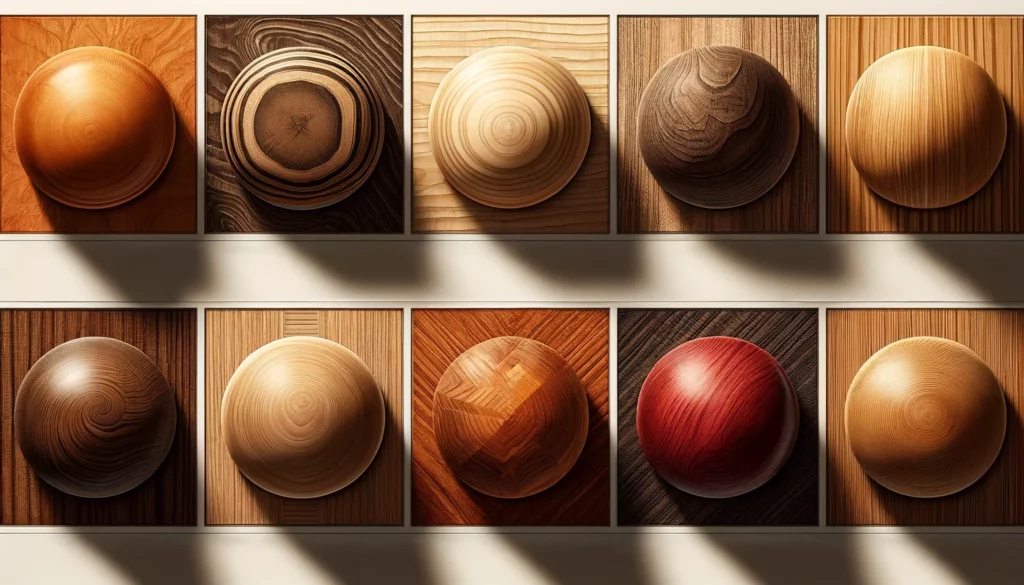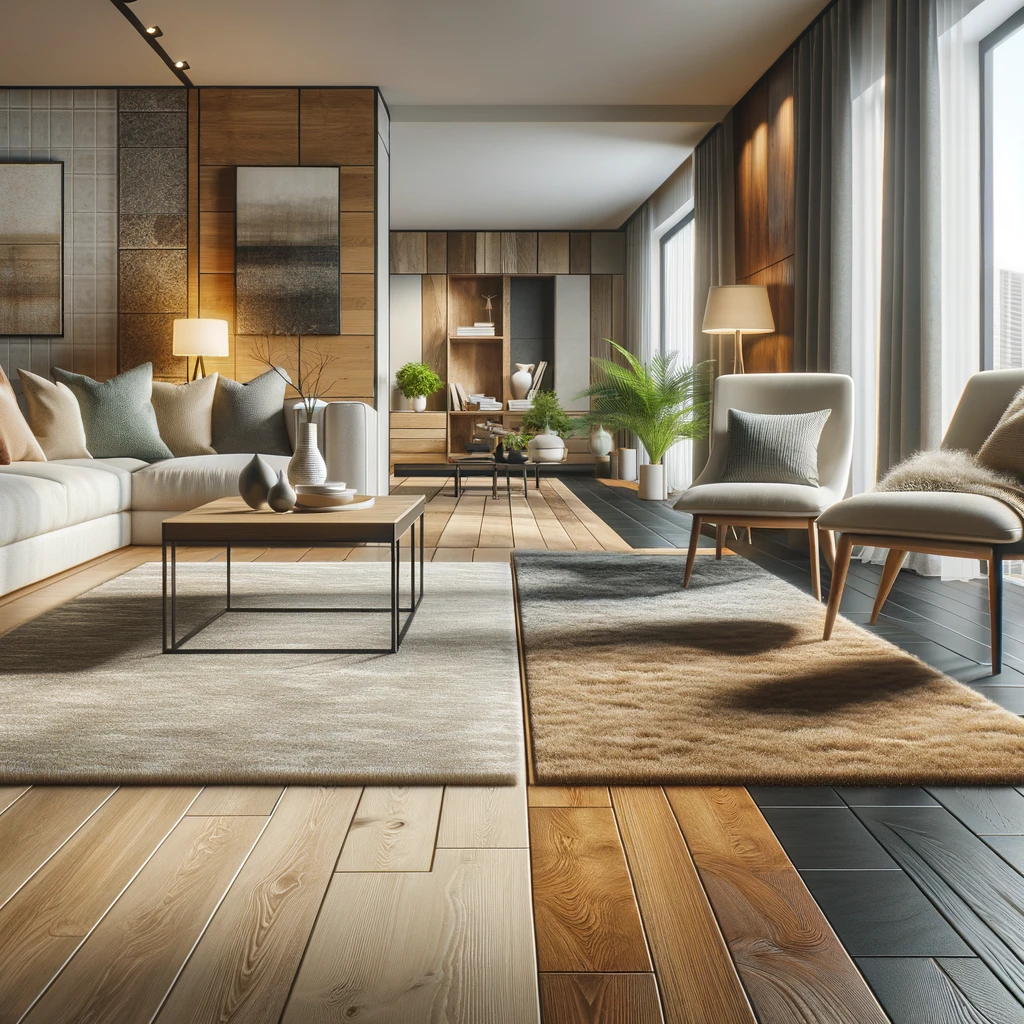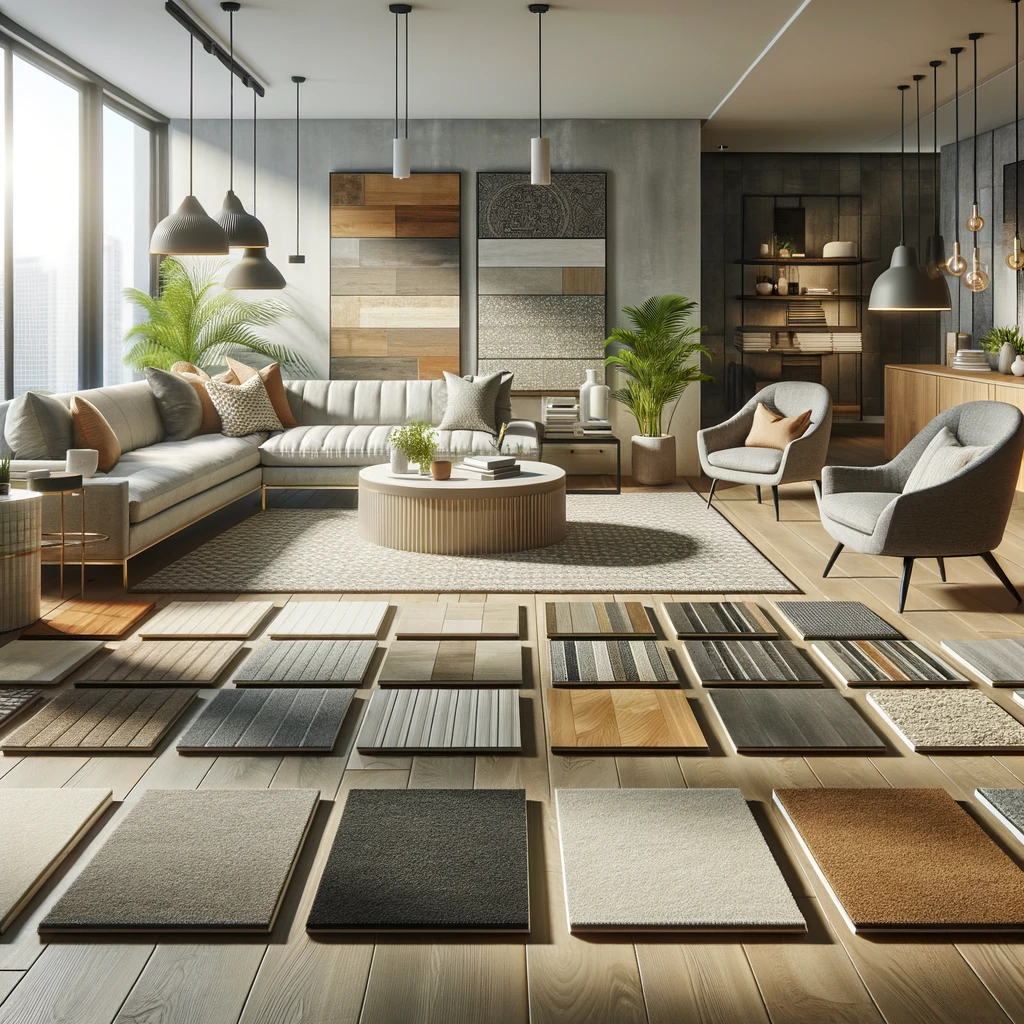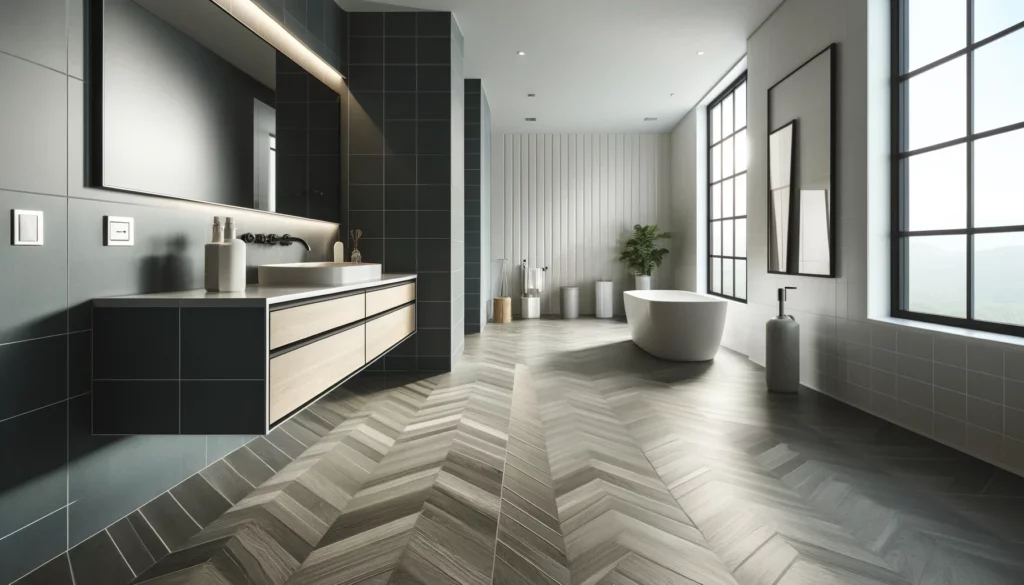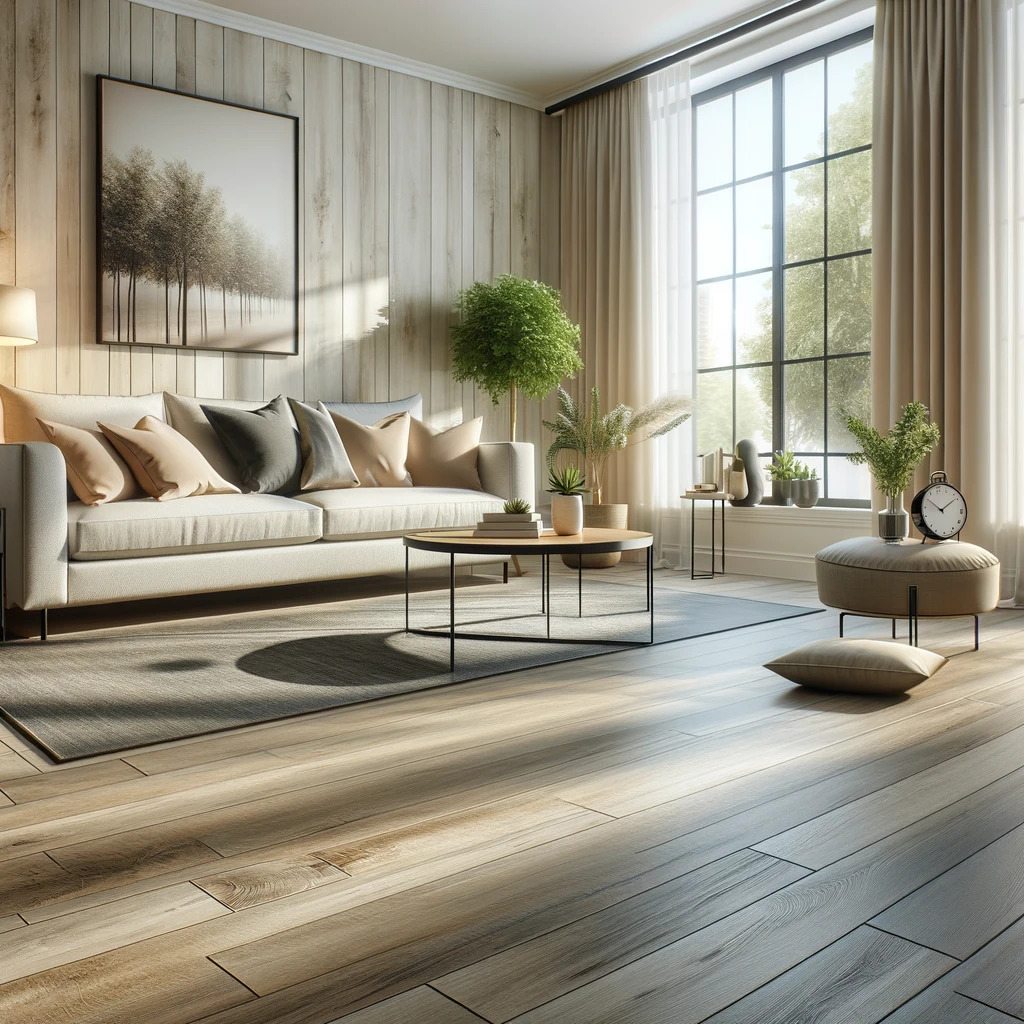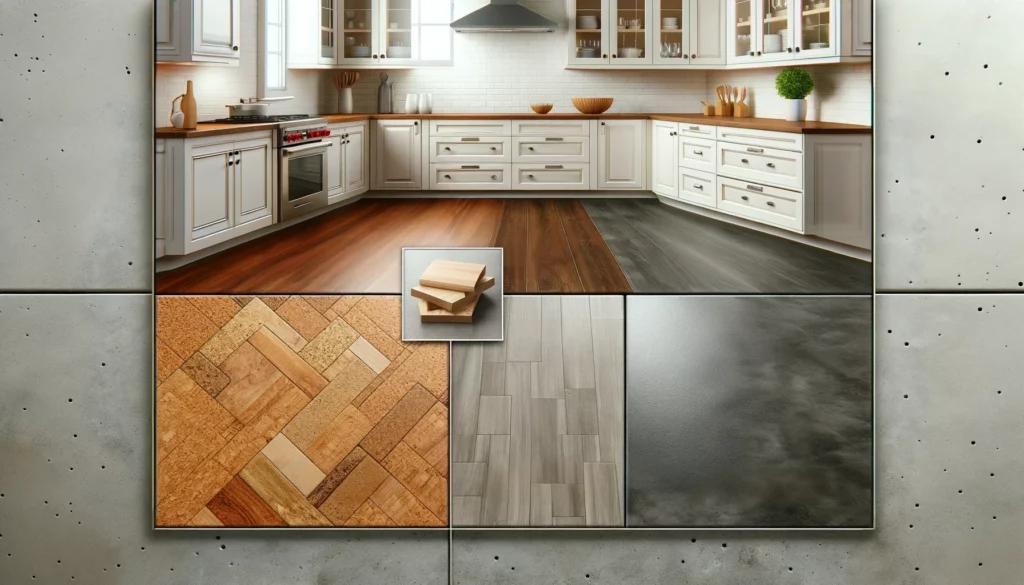Basics of Hardwood Flooring: Understanding the Most Popular
Hardwood Flooring Options
There is no disputing that hardwood flooring creates a luxurious look in any home, coming across as timeless elegant, warm, and long-lasting. It is little surprise then that the beautiful appearance and solid construction of wooden doors make it a perennial favourite of homeowners looking to add value and style to their property. The world of hardwood flooring can feel like a vast, complex thing at first with so many different species of wood, colors, and styles to choose between. However, grasping the basics about the different types is likely to enable you to make a well-informed decision that aligns entirely with your needs and desires.
Classic: Solid Hardwood Flooring
Solid Hardwood Flooring is the Original Choice Made from one piece of wood or several layers of wood, cut 3/4 inch thick. Built to last, this brawny construction will withstand extensive wear with even the opportunity to refinish it many times over a long lifetime and changing trends.
Engineered Hardwood Flooring: A Contemporary Wonder
One of the products of new technologies; Engineered Hardwood Flooring?Fact: Engineered hardwood flooring is a modern invention and it offers some inevitable advantages when compared to its predecessor ‘Solid Hardwood. Constructed from multiple layers of wood with a real hardwood veneer over the top. Because of this layering, engineered woods are more stable and moisture resistant, which makes it a good choice for areas that are subject to high levels of moisture change, like a basement or a kitchen.
For detailed information about enginerred hardwood flooring in the kitchen, don’t miss our The Ultimate Guide to the top 3 best floors for your kitchen: Which is Best for You?
Comparing Solid Hardwood vs. Engineered Hardwood
| Feature | Solid Hardwood | Engineered Hardwood |
|---|---|---|
| Construction | Single piece of wood | Multi-layered with veneer |
| Durability | High | High (but less durable) |
| Refinishing Options | Multiple | Limited (usually 1-2) |
| Moisture Resistance | Low | Moderate to High |
| Cost | Higher | Lower |
| Installation | More complex | Easier |
Protective Layer: Hardwood Flooring Finishes
All hardwood floors need some kind of finish in order to protect them from daily wear and tear, but the type of finish, and how long it will protect your floor, is really up to you. It is often done with a factory finish or made on-site after installation. Not all floor finishes are the same, they are made with different types offering distinct qualities regarding durability, look, and green credentials. Some of the most popular are:
- Polyurethane: mainly for hardwood floors It is available in the finish of matte, semi-gloss, and gloss that enables you to shine appropriately.
-
Oil-Based Finishes: These finish the wood by soaking into the wood to unveil the natural beauty of the grain in a gorgeous finish that you can rely on.
-
Wax: Wax finishes give a traditional appearance yet need to be resealed more frequently
Consider these fundamental factors associated with wooden flooring before you can install them because these are going to a wise choice, and understanding basics is the initial step to help you design good looking and durable floors.
A Guide To Popular Hardwood Species
Types of hardwood flooring are out of your way, which would have provided you an idea of the best hardwood flooring for your home, but as soon as you get the basic idea of the klass of hardwood, do not miss the good kind in hardwood flooring. Every wood species has individual traits like grain pattern, color, hardness, and cost that will impact the look and feel of your floors.
Oak: A Timeless Classic
One of the hardest and most durable of the hardwoods, oak is by far the most common species for wood flooring. Its signature grain, from gentle to bold, makes a statement and warms up any environment. Oak is a varied type of wood that comes in red, and white varieties with a wide variety of color shades.
- Red Oak: characterized by reddish-dark to medium brown hues with a stronger grain pattern.
- White Oak: The vibrant, softer color of white oak is complemented by its less porous grain.
Just about anyone with access to a saw and a hammer can do this because of oak’s durability and ability to withstand high-traffic areas without looking out of place.
Elegance and Durability Designed by Maple
Nothing quite says luxury and style like a maple floor. Its small grain produces a very smooth finish, and it is typically presented in its natural colours. While slightly less hard than oak, maple is even tougher and is resistant to scratches or dents.
Hickory: Unmatched Durability
It is known for being the hardest hardwood species with Hickory. It is very durable and has a unique vintage appeal to the wood which does very well for moderate to high traffic areas or homes with pets, etc., as well as for consumers who are looking for a robust floor. Its colors span from rich browns to golden tones as well as featuring large knots and strong grain patterns that provide a bit of character.
Cherry: Warmth and Rich Color
Evocative of warmth and refinement, a cherry hardwood floor is the epitome of classic taste. Their deep reddish-brown palette with occasional hints of orange are an inviting feature. The grain is usually straight and not very pronounced, yielding a relatively neutral appearance. Originally, Cherry naturally grades to a darker tone as centuries pass, becoming a beautiful reminder of a bygone fad.
Walnut: Rich, Dark Beauty
Walnut flooring provides a luxurious, elegant look to any room. With deep rich brown hues, which include dark streaks, it just speaks of drama and the ever classic. Its irregular grain patterns often feature swirls and knots, that give it a lot of depth and visual interest. Walnut is revered for the uniformity of its color and its potential to be stained to draw out its extremes of color.
Bamboo: Sustainable and Versatile
Despite the fact that it is a type of grass, bamboo flooring is phenomenally strong and sustainable. The natural light color, with a warm, golden hue, is the perfect fit for modern and contemporary designs. Because of its moisture resistance, bamboo is perfect for bathrooms and kitchens. It is even available in a variety of styles including planks, strips and tiles.
Knowing what makes these popular hardwoods stand out allows you to further refine your options, better suited with your unique requirements and taste. The next step would be exploring the universe of styles and designs, making sure that the species of choice align with your home overall vision.
Design & Styling: Inside and Out
Armed with your firm choice of hardwood species, it is time to embark upon a little style and design exploration. The right look for your home Your flooring selections will have a dramatic effect on the entire environment of your home.
Stain Colors and Hardwood Flooring Tones
Customization can be achieved using hardwood flooring stain colors. Similarly, the stains are used to bring out the character in the wood product as well that makes the richness and depth of the wood while, giving it that warm hue. To help you out, here are some of the popular stain options:
- Natural: a natural stain brings out the natural color and grain of the wood lending a light and airy feel.
- Lighter: Light woods like the gold oak are a softer, lighter wood option, which lightens the room up and in many instances can unexpectedly provide the appearance of a bigger room.
- Medium: Walnut and cherry turns medium tones which are a classic and can complement diverse styles of decoration.
-
Dark: Dark stains make for a dramatic, bold ambiance, and they tend to set off the character of a room as well as create a focal point.
Adding Visual Appeal to Hardwood Flooring Grain Patterns
Hardwood grain patterns provide a texture to your flooring. This includes common grain patterns like the ones listed below:
- Straight Grain: Straight grain is two or three boards that are matched for a repetition of the grain, up and down the plank creating a traditional look.
- Spiral Grain: Spiral Grain offers an artistic flair and premium look.
-
Wavy: Features smooth, rolling lines that provide beauty and motion to the room.
Wood Floor Types – Above and Beyond the Traditional Plank
Before you can say plank flooring is passe and has no style, however, take a look at these trendy alternatives.
- Wide Plank Flooring: Provides a feeling of space and modern elegance, perfect for use in larger modern or contemporary homes.
- Parquet: A timeless classic and a signature of elegant wood floors, often made up of smaller pieces of wood in intricate geometric patterns.
- Herringbone Flooring: Positioned in such a manner as to create a pleasing yet unique pattern known as herringbone flooring, which can be used to add beauty and elegance to any setting.
-
Chevron Flooring: While having a very similar look to Herringbone, chevron is more straight-edged.
Style that blends with your decor
Choose a hardwood flooring style that reflects your current decor and style.
- Modern Homes: Wide planksNatural or light stains used to provide a clean, minimal look
- Traditional Materials: May include planked flooring with mid-toned stains for a touch of the old world to the domain.
-
Statement Homes:May choose to contrast marble tiles like herringbone or chevron for a dramatic and stylish finish.
The right hardwood flooring can also change the feel and aesthetic of your home making it feel warmer, more liveable and more attractive.

Alternatives to Hardwood Flooring :Widen your options
Although hardwood not only looks attractive but also remains strong and robust, it is not the only option you can choose to design an elegant functional floor. Many of these alternatives give you the aesthetics, longevity, and economy of treated lumber, and they can realize this without much fuss and expense. Below are some of the most common hardwood floor alternatives
Engineered timber flooring is actually a functional selection
It serves as a flexible substitute to the solid hardwood and is known as engineered wood flooring, or engineered hardwood. It has all the elegance of real wood but with the modern advancements in technology, making it a sturdy and stable choice for a floor. Engineered wood is a product constructed by multiple layers – the deepest layer being made of real hardwood veneer. This layering also gives it durability that is more moisture resistant than most hardwoods, making it a good choice for humid areas such as basements or kitchens.
Laminate Floors: A Low-Expense Option
Budget-friendly option that looks and feels like a real wood, with natural-looking wood patterns and texture. It consists of core layer high-density fiberboard and a top layer and protective wear layer. What are the benefits of laminate flooring:Parquet is durable, scratch-resistant and does not require special care, and because of the large area can be applied to operating facilities.
The Emergence Of Waterproof Flooring: LVP
Luxury vinyl plank, or LVP, is rising to the surface these days because it is durable, water resistant and looks great. Fulling layers of LVP Each LVP consists of several layers including a PVC-based core, a printed layer with wood shades, and a top coating for protection. Because LVP is water-resistant, scratch-resistant and low-maintenance, it works well in areas where moisture might be an issue, such as kitchens, bathrooms and laundry rooms. Available in a myriad of styles, colours and textures, this product reflects the appearance and texture of hardwood, tile and even stone.
Types of Hardwood Substitutes: Price, Strength, and Design:
| Feature | Engineered Wood | Laminate | Luxury Vinyl Plank (LVP) |
|---|---|---|---|
| Cost | Moderate | Lower | Moderate to High |
| Durability | High | Moderate | High |
| Water Resistance | Moderate to High | Low | High |
| Refinishing Options | Limited | None | None |
| Style Versatility | Moderate | Moderate | High |
For detailed information about the comparison of laminate flooring and Vinyl flooring, don’t miss our Vinyl Flooring vs Laminate Flooring: Which is the Best for Your Home?
Benefits of LVP: Long-lasting, Water resistant, and Stylish
Why High-Quality LVP Is a Smarter Investment LVP is a better investment than other flooring options for several reasons:
- Long-lasting: LVP is very resistant to scratches, dents and fading.
- Resistant to Water: One of the things that makes LVP a good choice for kitchens, bathrooms, and other areas known to have spills or high levels of moisture.
-
LVP Style & Design Versatility: With countless styles, colors, and textures, LVP can be made to resemble a variety of materials, including hardwood, tile, and stone.
The perfect hardwood flooring substitute relies on various considerations like your financial plan, lifestyle, and the distinctive demands of your area. LVP in particular, offers a winning combination of durability, water resistance, and style versatility that makes it a front-runner for many homeowners.
Hardwood Flooring: Your Frequently Asked Questions
Which is the most purchased hardwood floors?
Wood flooring is also one of the most sought after types of flooring, and oak is the most popular, mainly due to its durability, large color range and affordable price. It includes both red and white oak species and is ideal for high-traffic areas because the wood grain naturally disguises scuffs.
Most Durable Hardwood Flooring
Hickory is one of the toughest hardwoods, it has a high level of hardness feeling in scratches and dents.
What are the most widely-used Australian hardwood species for flooring?
Some of the most common Australian hardwood species used for these type of flooring are Blackbutt, Spotted Gum, Jarrah, Grey Ironbark, and Marri (WA), other are Tasmanian Oak also known as Victoria Ash.
